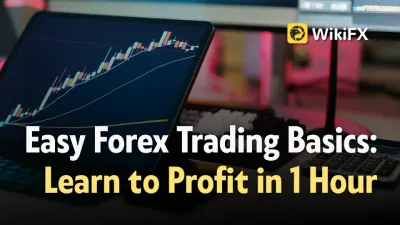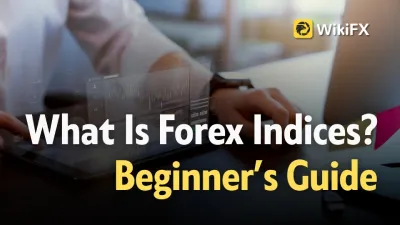简体中文
繁體中文
English
Pусский
日本語
ภาษาไทย
Tiếng Việt
Bahasa Indonesia
Español
हिन्दी
Filippiiniläinen
Français
Deutsch
Português
Türkçe
한국어
العربية
Do This ONE Thing to Transform Your Trading Performance Forever
Abstract:The story is all too familiar. You start trading with high hopes, make some quick profits, and feel like you've finally cracked the code. But then, just as fast as your gains came, they disappear. Your account balance dwindles, and soon you’re left wondering what went wrong. Worse still, fear and confusion creep in, making every new trade a stressful gamble rather than a calculated decision. If this cycle sounds familiar, you’re not alone.

The story is all too familiar. You start trading with high hopes, make some quick profits, and feel like you've finally cracked the code. But then, just as fast as your gains came, they disappear. Your account balance dwindles, and soon you‘re left wondering what went wrong. Worse still, fear and confusion creep in, making every new trade a stressful gamble rather than a calculated decision. If this cycle sounds familiar, you’re not alone. Most traders struggle with account blowouts and inconsistent results because they overlook one fundamental aspect of trading: risk management.
The reality is that successful trading isn‘t about picking the perfect entry or chasing every market move, but it’s about managing risk. Many traders approach the markets with a mindset of quick wins, without a structured approach to protecting their capital. They enter trades impulsively, unsure of when to exit, and end up holding onto losing positions for too long, hoping the market will reverse in their favour. The result? More losses, emotional trading, and, eventually, a blown account.

If you want to break free from this cycle, there is one thing you must do: pre-plan your trades with strict risk management rules. This means setting your entry points, exit points, and risk-reward ratios before placing a trade. Heres how this simple yet powerful shift can dramatically improve your trading performance:
- Define Your Entry and Exit Points
Before you even think about executing a trade, determine your ideal entry level based on your strategy. More importantly, set a pre-determined stop-loss to cut your losses and a take-profit level to secure your gains. This removes emotional decision-making from the equation.
- Use a Fixed Risk-Reward Ratio
Every professional trader operates with a clear risk-reward ratio, such as 1:2 or 1:3, meaning for every unit of risk, they aim to make at least two or three times the profit. By maintaining this discipline, even if you win only 50% of your trades, youll remain consistently profitable.
- Never Risk More Than a Small Percentage of Your Capital
A golden rule in trading is to risk only a small percentage of your account, typically 1% to 5% per trade. This ensures that even a string of losses wont wipe out your capital, allowing you to stay in the game long enough to realise long-term profits.
When you incorporate these elements into your trading, you move from reckless gambling to strategic investing. Having a pre-planned risk management strategy turns trading into a structured system, rather than a random pursuit of profits. Over time, this approach allows traders to generate steady, passive income rather than experiencing the emotional rollercoaster of constant account depletion.
In summary, the difference between consistently profitable traders and those who struggle isnt luck, but risk management. By pre-planning your entry, exit, and risk-reward ratio for every trade, you eliminate the uncertainty and emotional decision-making that lead to costly mistakes. If you do this one thing, your trading performance will transform, allowing you to approach the markets with confidence and control. The choice is yours: continue chasing trades blindly or start managing risk like a professional and build a sustainable trading career.

Disclaimer:
The views in this article only represent the author's personal views, and do not constitute investment advice on this platform. This platform does not guarantee the accuracy, completeness and timeliness of the information in the article, and will not be liable for any loss caused by the use of or reliance on the information in the article.
Read more

Where is ThinkMarkets Broker Licensed to Operate?
ThinkMarkets broker is multi‑regulated worldwide. See its FCA, ASIC, CySEC, FSCA, DFSA, JFSA, FSA, CIMA, FSC, and FMA licenses, entities, and jurisdictions in one guide.

“Ho Chi Minh City Elite Night” Successfully Held, Focusing on Building a Sustainable Forex Ecosystem
On August 15, 2025, the WikiFX Elites Club Cocktail Party was successfully held in Ho Chi Minh City, promoting the establishment of a more influential and sustainable forex ecosystem network. Themed “Trust as the Foundation, Connecting the World, Developing a Sustainable Financial Ecosystem,” the event centered on trading safety in the Vietnamese market and the future development path of the industry. Nearly a hundred local industry experts, top IBs (Introducing Brokers), and renowned KOLs attended to explore the deeper trends and ecosystem-building directions of the forex market.

Easy Forex Trading Basics: Learn to Profit in 1 Hour
Master the basics of easy forex trading with practical beginner tips, safe methods, and simple profit strategies. Start learning and trading in one hour.

What Is Indices in Forex? A Beginner’s Guide to Trading Forex Indices
Understand what indices in forex are, how DXY works, key differences vs pairs, pros/cons, and where to trade CFDs—beginner-friendly, expert-backed guide.
WikiFX Broker
Latest News
European leaders to join Zelensky at White House meeting with Trump
Where is ThinkMarkets Broker Licensed to Operate?
IG Japan Ends Discount Program on Aug 17
Easy Forex Trading Basics: Learn to Profit in 1 Hour
“Ho Chi Minh City Elite Night” Successfully Held, Focusing on Building a Sustainable Forex Ecosystem
Currency Calculator


